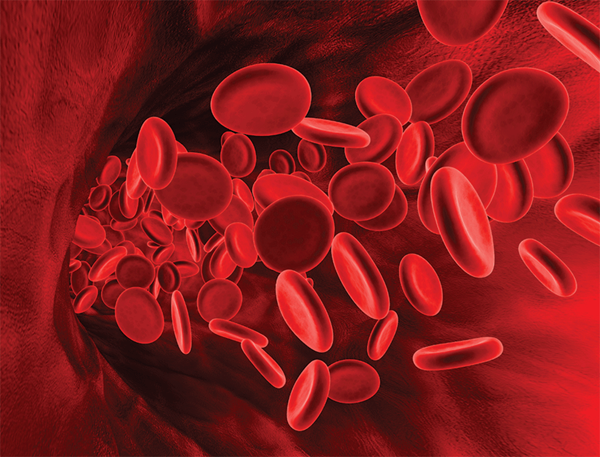From the November 2013 issue of Emergency Medicine Practice, “Anemia In The Emergency Department: Evaluation and Treatment.” Reprinted with permission. To access your EMRA member benefit of free online access to all EM Practice, Pediatric EM Practice, and EM Practice Guidelines Update issues, go to www.ebmedicine.net/emra, call 1-800-249-5770, or send e-mail to ebm@ebmedicine.net.
- “He didn't say he was on warfarin, so why would I check an INR?”
Many elderly patients are poor historians secondary to dementia or polypharmacy. In an elderly patient being evaluated for anemia, the INR should be considered, as elderly patients are more likely to omit mentioning prescribed medications than their younger counterparts and are more likely to develop coagulopathies from other causes. - “Patients always exaggerate how much bleeding there is. Most is self-limited anyway.”
Bleeding (e.g., from the gastrointestinal tract and upper airway) can produce a significant amount of hemorrhage that may require admission to the hospital for observation. - “The patient with a gastrointestinal bleed was old, but he didn't have any chest pain, so why would I get an ECG?”
Many older patients have major cardiovascular risk factors. With enough bleeding, there may be ECG changes to suggest cardiac ischemia secondary to supply or demand mismatch. - “The hemoglobin was 9 g/dL, so I didn't think she needed a transfusion; I just gave her 1.5 L of normal saline for resuscitation.”
By initiating too much crystalloid, there is the possibility of dilution of RBCs, causing decreased oxygen-carrying capacity and further injury (such as cardiac ischemia). - “The patient came in with a history of moderate gastrointestinal bleeding and a blood pressure of 90/60 mm Hg. I gave him 2 L of crystalloid. The blood pressure improved, but the bleeding restarted.”
While not true for every patient, it may be more advantageous to allow a patient to be mildly hypotensive as long as they do not show signs of tissue hypoperfusion. Increasing the blood pressure may disrupt primary hemostasis as hydrostatic forces within the blood vessels increase. - “The vital signs are normal, so he can't be bleeding much.”
Many patients are on beta blockers or other atrioventricular nodal blocking agents that may falsely normalize the vital signs in the face of significant hemodynamic compromise. - “I gave the patient 4 units of packed RBCs, but she continued to bleed and deteriorate.”
When patients bleed, they lose more than just RBCs. Coagulation factors and platelets are also lost as hemorrhage continues, and dilutional coagulopathies can occur. Resuscitation with fresh frozen plasma (and possibly platelets) may be required, depending on the degree of bleeding and amount of RBCs that are transfused. - “Because the patient's hemoglobin was 11 g/dL with a low MCV of 78 fL, I figured the anemia was due to iron deficiency and I discharged him on iron supplements.”
Although iron deficiency is the most common cause of a microcytic anemia, other causes of a low MCV need to be considered. As it turned out, this patient had thalassemia minor, which is usually asymptomatic and does not require treatment. - “The hemoglobin was 9.8 g/dL; because it was <10 g/dL, I transfused the patient.”
No isolated threshold hemoglobin value has been shown to correlate with outcome of RBC transfusion. The use of blood transfusions should be based on whether the patient has clinical symptoms or signs suggesting a clinically significant anemia and not on a specific number. - “The parents said there was blood in their baby's diaper, so I felt I needed to work up a potential coagulopathy and anemia.”
In infants with a history of rectal bleeding, the first step is to confirm that what the parents saw was really blood. Even if blood is not confirmed on the rectal examination, a laboratory screening for anemia and coagulopathy should be pursued.



